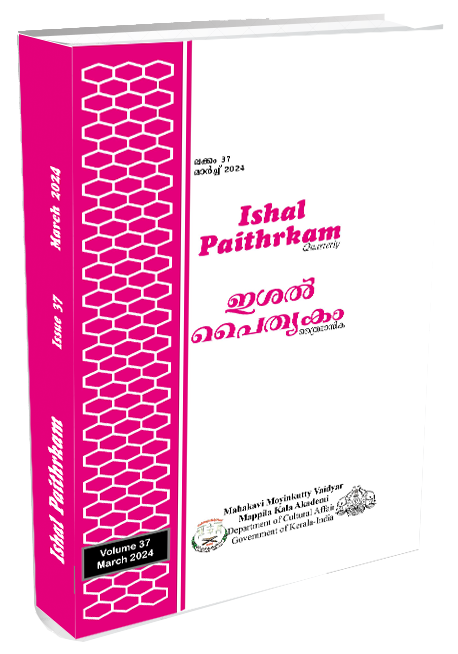Towards a Graphic Ecopedagogy: An Ecofeminist Reading of Amruta Patil and Devdutt Pattanaik’s Aranyaka
Keywords:
ecology, ecofeminism, ecocriticism, ecopedagogy, environment, anthropocentrismAbstract
Amruta Patil and Devdutt Pattanaik’s 2019 graphic novel Aranyaka (Book of the Forest) is inspired by Vedic scriptures and explores the forest’s role in humanity, particularly the journey from hunger and fear to domestication and empathy. Furthermore, the book delves into the lives of Katyayani the Great, Maitreyi the Fig, and Gargi the Weaver, the novel’s three rishikas, and their relationship with mother nature. This paper attempts an ecofeminist analysis of Aranyaka and explores how the graphic novel, as a form, acts as an ecopedagogical tool, promoting ecological literacy among readers who are in the process of becoming eco- and gender-conscious, and thus contributing to the protection of the environment and mankind. Environmental Science and ecocriticism gained prominence in literature during the previous century’s final decade, owing to the ongoing threat the environment posed to humans and mother nature. Ecocriticism arose as a result of man’s anthropocentric attitude of elevating himself above nature. In the contemporary milieu, characterized by heightened awareness of environmental issues, the field of ecocriticism has witnessed a substantial and expeditious expansion within a brief span subsequent to its inception. In this context, ecofeminism emerges as a distinctive strand of feminism, concentrating on the intricate interplay between women and the environment. By advocating for a collaborative ethos grounded in communal care and love, ecofeminism champions the preservation of the delicate tapestry of natural life.
Downloads
References
“Comics Uniting Nations - the Shorty Awards.” The Shorty Awards - Honoring the Best of Social Media, shortyawards.com/3rd-socialgood/comics-uniting-nations. Accessed 11 Aug. 2023.
David, Gruenewald (2008). ‘The best of both worlds: a critical pedagogy of place’. Environmental Education Research. 14. 308-324. 10.1080/13504620802193572.
Eaubonne, Franc’oise D’, Myriam Bahaffou, et al. (2020). Le Feìminisme Ou La Mort. Le Passager Clandestin.
Eaubonne, Franc’oise D’, Ruth A. Hottell, et al. (2022). Feminism or Death. Verso.
Fassbinder, S. (2012).Greening education. Greening the academy: Ecopedagogy through the liberal arts (pp. 1-22). Springer Science & Business Media.
Gaard, Greta Claire. (1993). Ecofeminism: Women, Animals, Nature. Temple University Press.
Jones, Clint. (2020). Apocalyptic Ecology in the Graphic Novel: Life and the Environment after Societal Collapse. McFarland & Company, Inc. Publishers.
McCloud, S. (1993). Understanding comics: the invisible art. Northampton, MA, Kitchen Sink Press.
Mies, Maria, et al. (2014). Ecofeminism. Zed Books.
Patil, Amruta, and Devdutt Pattanaik. (2019). Aranyaka: Book of the Forest. Tranquebar.
Patil, Sangita. (2020). Ecofeminism and the Indian Novel. Routledge/ Earthscan from Routledge.
Ruether, Rosemary Radford. (1997). ‘Ecofeminism: First and third world women’. American Journal of Theology and Philosophy 18 (1):33 - 45.
Sturgeon, Noël. (2006). Ecofeminist Natures: Race, Gender, Feminist Theory, and Political Action. Routledge.
Downloads
Published
Issue
Section
License
Copyright (c) 2025 ISHAL PAITHRKAM

This work is licensed under a Creative Commons Attribution-NoDerivatives 4.0 International License.

